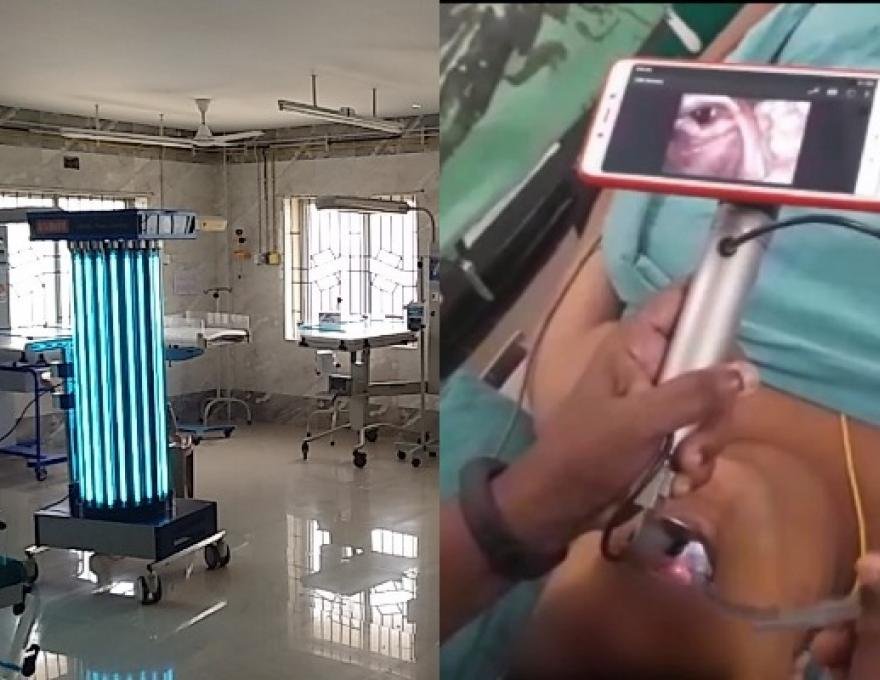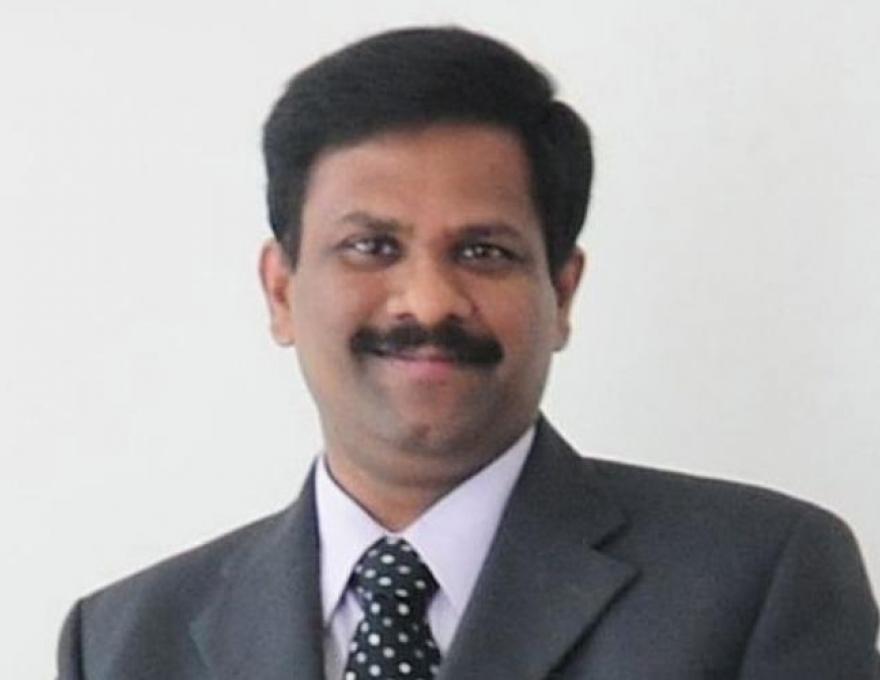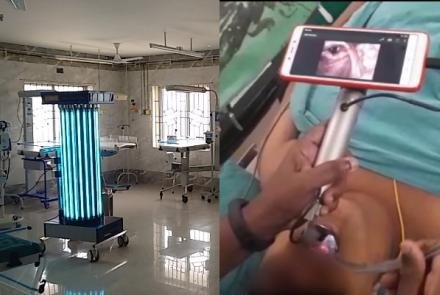Bengaluru Doctor’s Life Saving Machine Reduces Costs From Rs 5 Lakh To Rs 22K!
“My goal is to ensure these devices reach every doctor, so that all patients irrespective of income levels benefit.”
In another life, Bengaluru-based ENT surgeon and healthcare entrepreneur Dr Kumaresh Krishnamoorthy could have become an engineer considering that’s where his inclination lay initially. But fortunately for the healthcare sector in India, he chose to study medicine.
Armed with nearly two decades of professional experience and a successful practice, he caught the entrepreneurial bug three years ago. Besides augmenting his practice, he wanted to give something back to society. With his passion for engineering ever present, there was no better way to give back than developing critical low cost medical devices for patients in India.
“In healthcare entrepreneurship, doctors are the best because they understand the demand and know what needs to be done. My foray into medical equipment innovation is driven by an ability to think out of the box and find solutions particularly for patients who can’t afford quality treatment. My goal is to ensure these devices reach every doctor, so that all patients, irrespective of income levels, benefit,” he tells.
There are two particular devices that Dr Kumaresh Krishnamoorthy has developed that stand out—IoT-enabled video laryngoscope and the UV Bot.
IoT-enabled video laryngoscope
Laryngoscopes are critical medical devices that are used in operation theatres, ICUs, ambulances and for post-surgical documentation. This device is used to look into your throat and larynx, and insert a tube that enables breathing when a patient can’t breathe on their own. In a video laryngoscope, however, “the visualisation of the larynx is performed with a fiberoptic or digital laryngoscope inserted transnasally or transorally,” says this paper.
“We have developed different variants of the video laryngoscopes. One is for regular use, another includes laryngoscopes for new-born babies and children upto 2-3 years and another for patients who are unable to open their mouths because of certain conditions,” says Dr Kumaresh.
But it’s the Wi-Fi/IoT-enabled video laryngoscope employing an android mobile phone/tablet for light and as a camera which could really save lives and nullify the information asymmetry that exists between doctors and patients over certain medical procedures.
Let’s say there is an ambulance and a paramedical staff. They need to intubate the patient, but have no idea how to because there aren’t any doctors around. Instead, they use the internet facility available and the doctor sitting in a hospital can assess the situation in real time through an app. In other words, the said doctor can guide the paramedical staff through the emergency procedure. This form of remote guidance can save lives.
“For teaching purposes, this device allows medical students or paramedical staff to watch the live procedure on an Android TV, tablet or any such device. We are just waiting for a response to our patent application,” says Dr Kumaresh.
What inspired him to develop this device?
“If you remember a year back, there were a series of incidents that created a lot of animosity between the doctors and patients. Doctors were being beaten up by angry relatives and friends of patients for their inability to treat them because of whatever reason. So, I analysed this problem closely and tried to understand why this was happening. It boils down to the cost involved in treatment. Many hospitals have just one video laryngoscope used in the operation theatre. Smaller hospitals don’t even have one, and anesthetists bring their own flexible one that also costs around Rs 5 lakh. What about doctors in Tier-II or Tier III cities,” he asks.
“With our device, we can record the procedure and take pictures. So, if the patient’s family accuses the doctors of committing mistakes in the operation or performing unnecessary procedures, doctors can now show them all the documentary evidence and thus reduce this information asymmetry. More importantly, we want to show the world that we can develop superior devices at 1/10 the costs. If you look at quality video laryngoscope, it would cost you anywhere between Rs 4-5 lakhs. Our device is just Rs 22,000 including GST,” he adds.
For production, Dr Kumaresh has collaborated with an old friend Mr. Rajasekhar, who is based out of Chennai, and has now made the foray into manufacturing medical devices with his company Real Time Controls. Aside from the device itself, which took a year and a half to develop, the package will include four blades, one-year warranty, technical assistance, magnets to place the phone and a free live demonstration.
“What Infosys did with software, we want to do the same for medical devices,” he says.
UV Bot is the most powerful in the world market right now, claims Dr Kumaresh
Next in line is the UV Bot, a disinfecting equipment that utilises powerful ultraviolet C radiation to sterilise and deodorise operation theatres, post-surgical units, ICUs, laboratories and wards. Incidentally, in the West the UV Bot is used in hotels and public places too. In countries like the United States, the FDA has mandated that all hospitals must use it. Insurance companies penalise hospitals that don’t use it.
“Unfortunately, the cost is extremely prohibitive in India including import duties and taxes. The cheapest one would cost around Rs 60 lakh while the top-end one would be around Rs 1 crore. How many hospitals can afford it? We are planning to price it around Rs 10-12 lakhs including GST, warranty, installation and transportation charges. It’s already ready and has been validated at a NABL-accredited testing lab. We are in talks with a few educational institutes to gauge what is the minimum and maximum concentration, and the various germs it can kill so that it can be published and presented at national/international Conferences,” he adds.
“When a patient leaves the hospital premises, there are infections and viruses lurking around because of the germs that aren’t visible to the naked eye. Just by washing it down with chemicals doesn’t do the job. UVC light is extremely effective against microorganisms, viruses, bacteria and spores which are extremely difficult to eliminate. The current version of our UV Bot has 20 bulbs, and ours is the most powerful in the market right now. It emits close to 1500W of high end UVC light, and kills the germs present even in shadow areas like under the bed, TV remote, door knob and handrails. Our idea is to use it every time a patient leaves the OT or the ward so that the room gets stabilised and deodorized completely,” says Dr Kumaresh.
Dr Kumaresh has even added extra sensors to the device to ensure the machine shuts down whenever a person accidentally enters the room because UVC light is quite dangerous when it comes in direct contact with human skin. The machine is operated remotely from outside the room, and takes 15 minutes to clear all germs. Instead of UV Bots, Indian hospitals go for fumigation. Although it works, you have to shut down the room for a couple of hours and the fumes are irritating to the eyes and nose. This results in longer turn over times, thereby affecting revenues.
With a patent application pending, Dr Kumaresh is more keen on ensuring that government hospitals in India that often struggle with sanitation and hygiene can avail of this Make in India device. Similarly, he states that this has enormous potential in railways, airlines etc. For example, its application will be very beneficial to IRCTC to sterilise and deodorise the blankets in a custom made equipment.
“If our device can save even one life, I will be extremely happy about it,” he says.
Meanwhile, he is currently working on more devices. A portable disinfectant unit, which will be useful for doctors in immediately sterilizing their instruments during medical camps or if it falls down in the OT. This is currently undergoing testing. He is also developing a Smart Toilet System, which will automatically sterilize and deodorise the bathroom after use, a Bluetooth-enabled electronic stethoscope and an IoT-enabled IV fluid monitor. All of these devices, he claims, will be available at an affordable cost and are being made in India. These devices will be much more economical than the existing ones, he claims.
Innovation seems to never stop in the mind of Dr Kumaresh Krishnamoorthy.
- Bannarghatta Road, Bangalore, Karnataka
- patients@drkumaresh.com
- 094839 64959
- http://www.drkumaresh.com/




Add new comment